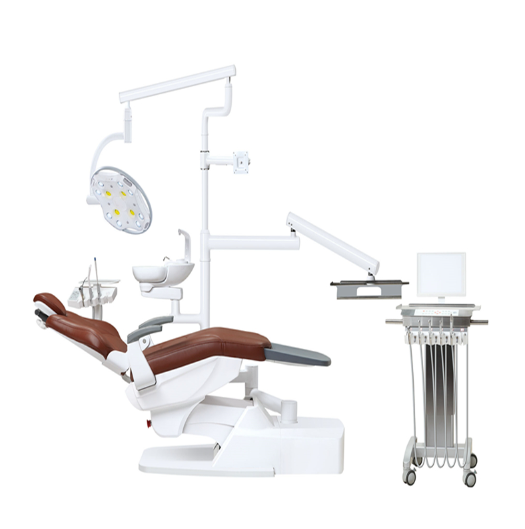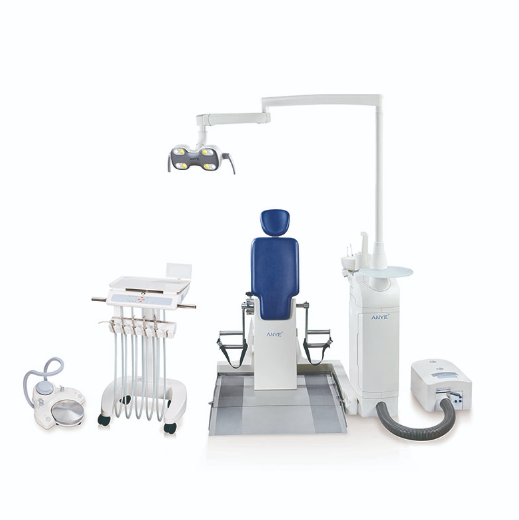How to Choose An Integral Dental Unit?
In the dynamic realm of modern dentistry, the integral dental unit stands as the cornerstone of a dental practice, facilitating procedures and ensuring patient comfort.
Selecting the right integral dental unit involves a careful assessment of various factors to harmonize functionality, durability, and technological integration. Here’s an in-depth exploration to help you make an informed decision.
Selecting the right integral dental unit involves a careful assessment of various factors to harmonize functionality, durability, and technological integration. Here’s an in-depth exploration to help you make an informed decision.
Functionality and Features
The backbone of any integral dental unit lies in its functionality. Consider the diverse procedures performed in your practice and the necessary features to support them. Adequate suction, efficient water supply, powerful lighting options, and adaptable settings for tools are pivotal. Opt for units with customizable options to tailor the setup to your specific practice needs.
User-Friendly Interface
A user-friendly interface is crucial for seamless operation. Look for units with intuitive controls, easy-to-navigate software interfaces, and clear displays. This not only aids the dentist during procedures but also simplifies training for new staff.
Ergonomics and Comfort
The significance of ergonomic design cannot be overstated, benefiting both the dentist and the patient. Look for units offering adjustable chair positions, ensuring patient comfort and ease of access to tools for the practitioner. Ergonomic designs not only enhance efficiency during procedures but also mitigate physical strain on dental professionals.
Quality and Durability
Investing in a durable integral dental unit is an investment in the future of your practice. Assess the materials used and the manufacturing standards to ensure the unit can withstand the rigors of frequent use and maintenance. Additionally, inquire about warranties and after-sales support offered by manufacturers to safeguard your investment.
Technological Integration
In today’s tech-driven landscape, seamless integration with other dental technologies is paramount. Choose a unit that accommodates digital imaging systems, software, and other modern dental technologies. Compatibility with these advancements not only streamlines workflows but also contributes to enhanced patient care.
Maintenance and Hygiene
Hygiene protocols are non-negotiable in dental practices. Prioritize units that are easy to clean and maintain to uphold stringent infection control standards. Seek features that facilitate hassle-free sterilization and maintenance routines, ensuring a safe and hygienic environment for both patients and staff.
Cost and Budget
While cost is a crucial factor, it should be weighed against the value proposition. Integral dental units come in a range of prices, reflecting differences in features, durability, and brand reputation. Consider the long-term benefits and savings that a high-quality unit may offer over its lifetime.
Noise Levels and Patient Comfort
Dental units can produce varying levels of noise during operation. Consider units designed with noise reduction features to ensure patient comfort. Lower noise levels contribute to a more relaxing environment for patients undergoing treatments.
Compatibility with Existing Equipment
If your practice already has certain equipment or technologies in place, ensure compatibility with the new integral dental unit. This avoids redundancy and maximizes the utility of existing investments.
Accessibility and Mobility
Accessibility is key for both patients and practitioners. Units with easy access to tools, adjustable armrests, and flexible positioning options enhance workflow efficiency. Additionally, mobile or portable units can be beneficial for specific practice setups or for conducting procedures in different areas of the clinic.
Training and Technical Support
Adequate training and technical support from the manufacturer or supplier are essential. Look for units where the supplier offers comprehensive training sessions for staff and readily accessible technical support to address any issues that may arise.
Conclusion
Selecting the ideal integral dental unit involves several factors. By understanding the unique needs of your practice and aligning them with these considerations, you can make a prudent investment that enhances patient care, optimizes workflows, and contributes to the success of your dental practice.



Leave a comment